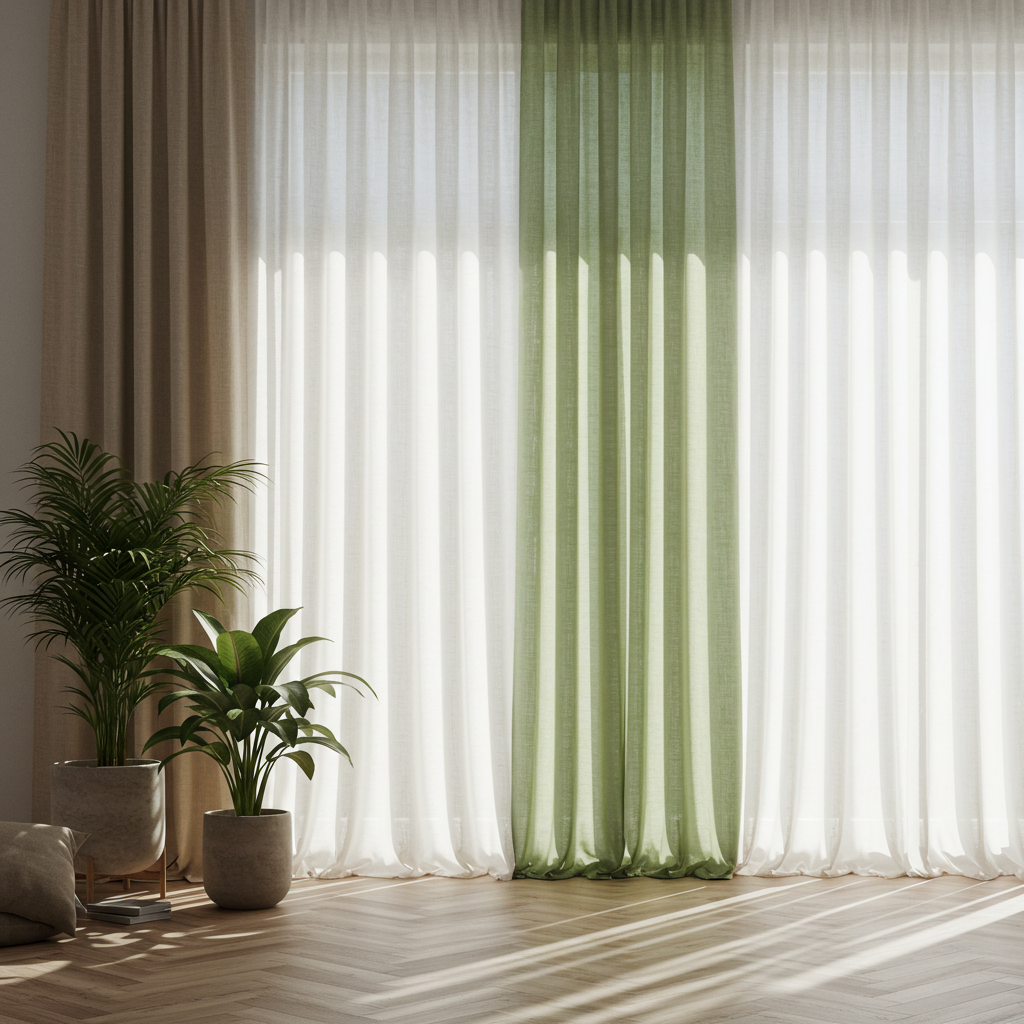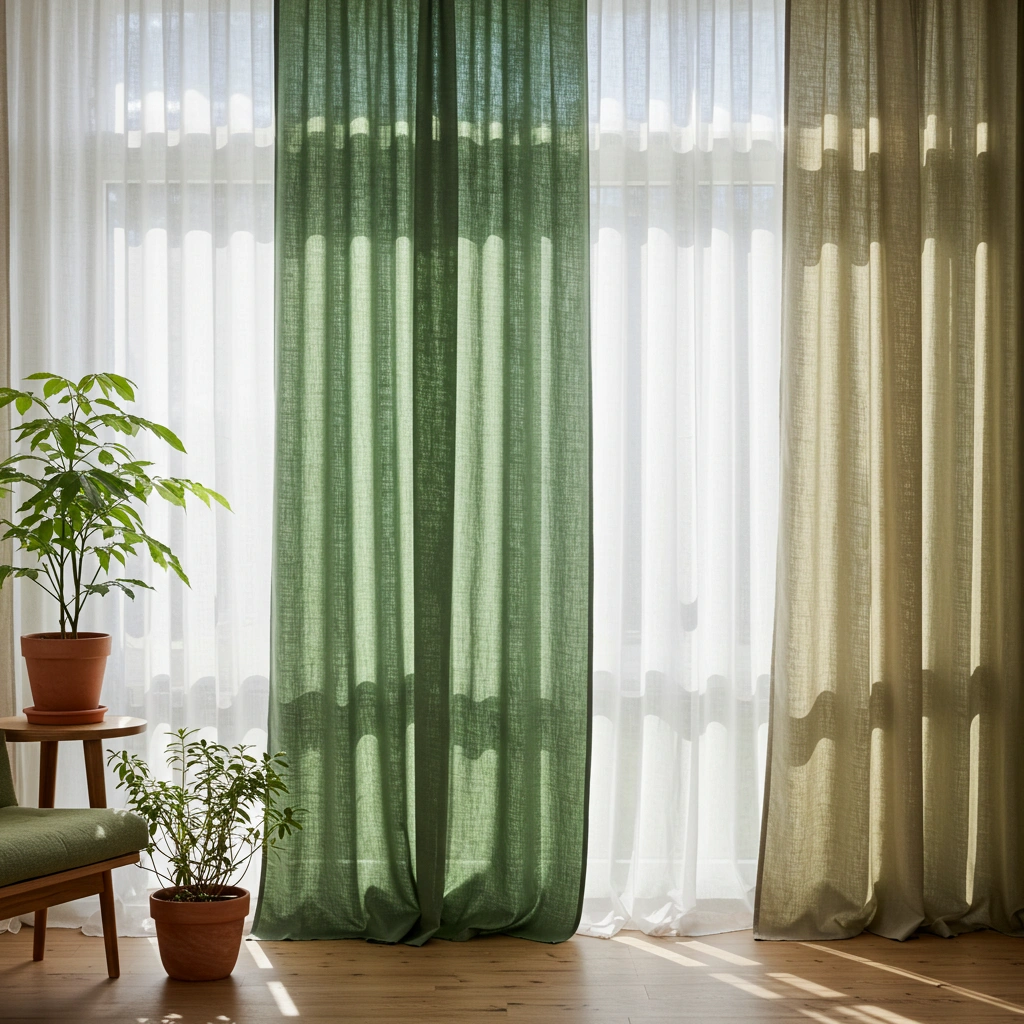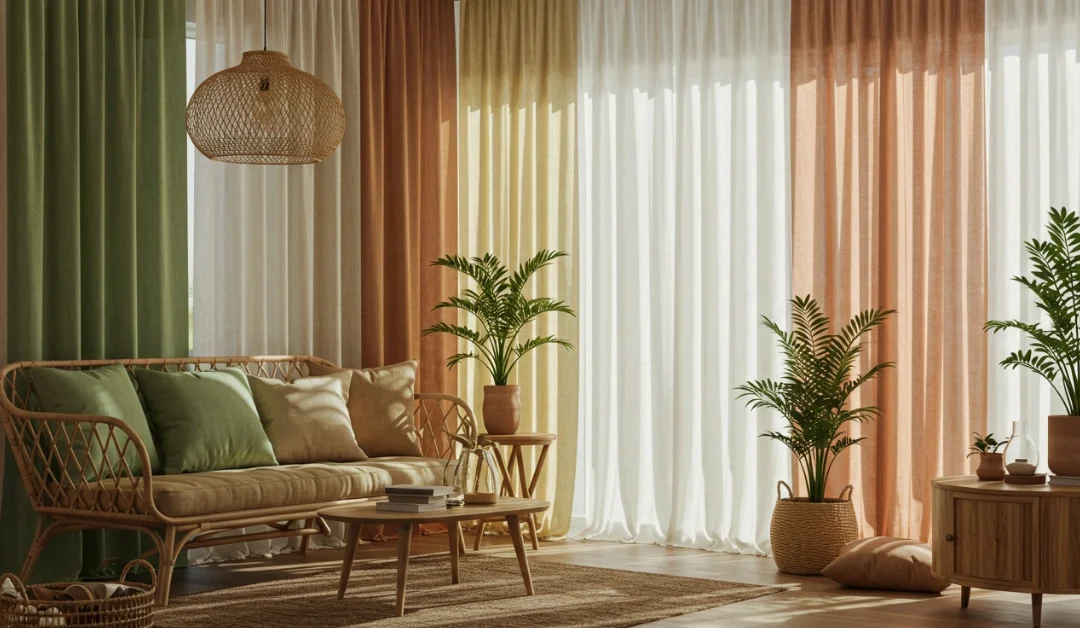Curtains are found in almost every home, but not all are made in a way that helps the planet. Sustainable curtains are designed to be kind to the environment while still looking nice in your room.
By choosing these curtains, less pollution is caused, and fewer resources are used. They are also safe for your family, as they are made without harmful chemicals.
1. What Are the Best Eco-Friendly Curtain Fabrics Available?

Are Organic Cotton Curtains a Good, Sustainable Choice?
Organic cotton curtains are grown without pesticides or synthetic fertilizers. These curtains are soft, strong, and safe for your home. When buying them, look for certifications like GOTS (Global Organic Textile Standard) to make sure they are truly organic.
Certifications to Look For
- GOTS Certified: Ensures no toxic chemicals are used.
- OEKO-TEX Standard: Guarantees fabrics are free from harmful substances.
For more details, explore Curtain Fabric Style for Every Room.
Are Hemp Curtains Eco-Friendly and Durable?
Hemp curtains are made from a fast-growing plant that needs little water or chemicals. They are strong, last a long time, and can be recycled after use. Compared to cotton, hemp uses less land and water, making it a top choice for Earth-friendly curtains.
Are Linen Curtains Sustainable and Stylish?
Linen curtains are made from flax plants. They are biodegradable, breathable, and perfect for warm climates like the UAE. To keep them looking fresh, they should be washed gently and not dried in direct sunlight.
Are Bamboo Curtains Sustainable?
Bamboo grows very fast and does not need much water. However, turning bamboo into fabric often involves chemicals. If you want bamboo curtains, choose ones that use eco-friendly processing methods.
Are Recycled Polyester Curtains a Green Option?
Recycled polyester curtains are made from old plastic bottles. They help reduce waste and use less energy than regular polyester. However, they are not biodegradable, so they may not be the best choice for long-term sustainability.
2. What Are the Benefits of Choosing Sustainable Curtains?
Sustainable curtains help reduce air and water pollution. They are also safer for babies and kids, as they do not release toxic fumes. Over time, they save money because they last longer and do not need to be replaced often.
3. How Can I Tell If a Curtain Brand Is Truly Eco-Friendly?
Some brands pretend to be green but are not. This is called “greenwashing.” To avoid this, look for real certifications like:
- Cradle to Cradle: Ensures materials are reused responsibly.
- Fair Trade Certified: Guarantees ethical labor practices.
Ask brands questions like, “Where are your fabrics made?” and “Are your dyes non-toxic?”
4. Which Are the Best Eco Curtain Brands in the UAE and Globally?
In the UAE, brands like Green Home UAE and Eco Décor Middle East offer curtains made from organic and recycled materials. For more ideas, visit Eco-Friendly Carpets, which also lists sustainable home décor options.
5. How Should I Care for My Sustainable Curtains?

To make your curtains last longer:
- Wash them in cold water to save energy.
- Use eco-friendly detergents to avoid harmful chemicals.
- Fix small tears instead of throwing them away.
For more tips, see Sofa Care and Upholstery Maintenance, which includes advice on cleaning natural fabrics.
6. How Can I Start Designing a Greener Home With Sustainable Curtains?
Start by picking curtains made from natural or recycled materials. Add plants to your room and use LED lights to make your home even greener. For more ideas, visit Smart Lighting: Illuminate Your Home.
7. Final Thoughts
Even small changes, like choosing eco-friendly curtains, can make a big difference for the planet. With so many stylish and sustainable options available, going green has never been easier or more beautiful!
8. Frequently Asked Questions (FAQs)
They are made from natural materials like organic cotton, hemp, and linen, or recycled fabrics.
Yes! They are safe, soft, and better for the planet than regular cotton.
Sometimes they cost a bit more upfront, but they save money over time because they last longer.
They can be if made using eco-friendly methods. Always check how the fabric is processed.
Use a clothesline to dry them instead of a dryer, and avoid harsh chemicals when washing.

